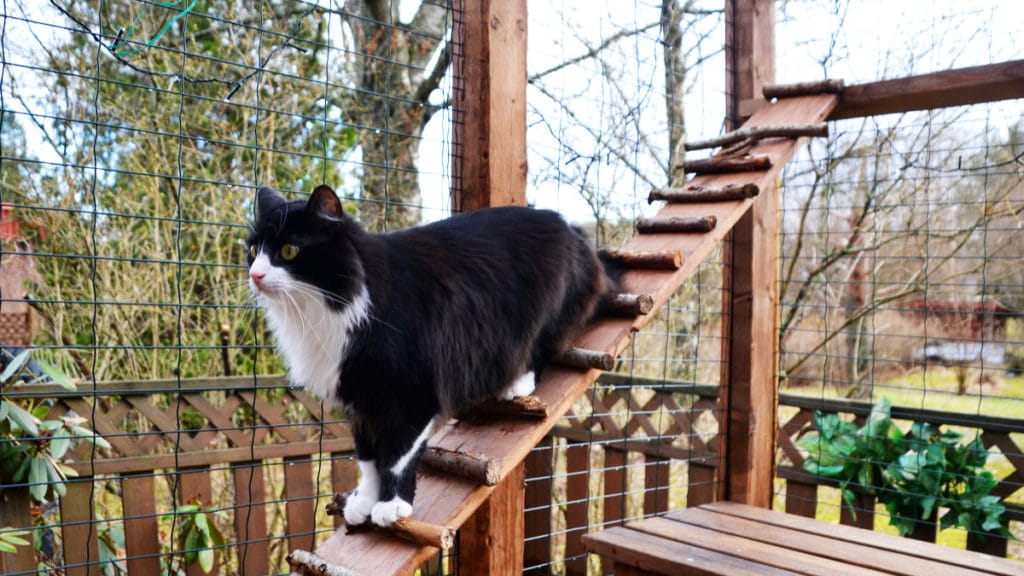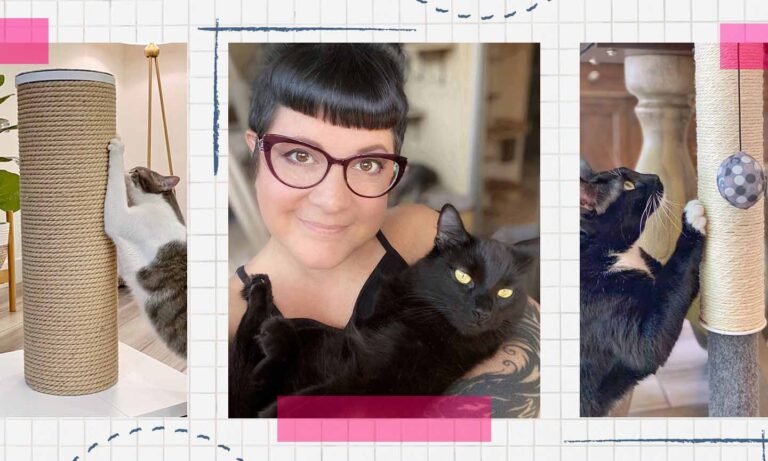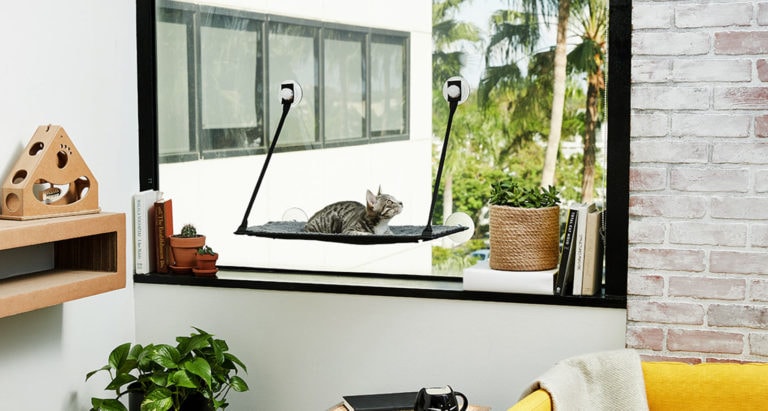Life shared with a cat is all about negotiations. While keeping your cat indoors helps to keep your feline safe from roaming dogs and coyotes, poisonous plants and fast-moving cars, it also can cause your cat to go a bit stir crazy within your four walls.
Being cooped up indoors all day also can cause your cat to gain weight by eating out of boredom, to get lazy about exercise and play or to unleash pent-up frustration by shredding your sofa, and no one wants that. To compromise, bring the outdoors to your cat safely by transforming your patio into the ultimate “catio.”
What Is a Catio?
By definition, a catio (or cat patio) is a safe, outdoor cat enclosure made specifically for housecats. The goal is to provide mental and physical enrichment to an indoor-living cat without the worry of outdoor threats or dangers.
Why Build (or Buy) a Catio?
Happy, healthy cats thrive when they have nutritious cat food, a safe home and playtime with their pet parents. A cool place to bring out their inner hunter takes the cake and is what makes outdoor cat enclosures such a hit for felines and their families.
“Catios, cat cubes and other such structures stimulate the cat’s brain,” says Jean Hofve, DVM, a retired holistic veterinarian and creator of the cat health website Little Big Cat. “Cats are predators and predators are very smart. They are very good at problem-solving, and their emotional health is so important. Catios give them opportunities to see birds flying, to watch bugs crawling and to feel the wind and the grass.”
Samantha Martin, a renowned animal trainer and “top cat” for the Acro-Cats, says building a catio is a win-win for you and your cat. Martin travels all over North America with her Acro-Cats—a troupe of former shelter cats and strays who perform tricks before bewildered audiences. When not on stage, the feline troupe hangs out in what Martin calls her “Meowy Manor”—a pair of large enclosed porches attached to her spacious home just outside of Atlanta, Georgia.
“The sun porch is climate-controlled and has lots of windows,” Martin says. “We have run a tunnel between the sun porch and the screen porch so the cats can enjoy views and smells of the outside. At night, the cats are captivated by the moths and other bugs that fly around the porch lights.”
Inside the Meowy Manor, Martin provides sturdy cat trees, perches and runways for her cats to move up, down and all around in a safe environment.
Tips for Creating the Perfect Catio
You can build a catio from scratch. Or, if you’re not a DIY-type, you can buy a pre-assembled catio or catio kit.
Julie Newton, a pet parent in Dallas, Texas, opted for the latter. While using her mini-shop in her backyard to work on home improvement projects, she noticed her indoor cat, Mikey, was always trying to dash out the back door.
“Mikey was clearly telling me that he needed fresh air and the feel of grass under his paws,” Newton says. “I didn’t want to risk him being loose in the backyard, and then I found the solution.”
Newton ordered the Trixie Small Animal Hutch with outdoor run. It took about three hours to put together, and now Mikey enjoys his “kitty coop.”
“When I am in the backyard gardening or enjoying a cool breeze on the back patio, Mikey gets to hang out in the kitty coop,” Newton says. “I just open the door and he walks right in. He loves climbing up and down the stairs and rolling on the grass.”
If you have the tools, talent and time to build your own four-sided, standalone catio, heed the advice of Bob Walker, a pet professional and author of the book, “The Cats’ House.” He is known as a leading pioneer in the catio/cat furniture-with-a-function movement.
Walker recommends using Douglas fir or another type of dense wood for the frame and cedar perches inside your catio.
“Opt for shelves 2 feet by 6 feet—the perfect width for the body of a cat so he can dangle his legs over the edges,” he says.
“Cats like to survey their surroundings from a safe high place,” says Walker. “Cats are also sun-seekers, so make these places cozy and warm for your cat to not only enjoy watching what’s going on in your backyard but also feel safe enough to take a catnap.”
A Trixie Altrea 46-inch cat tree and scratching post or Frisco two-story cat condo should do the trick to satisfy your cat. Inside the catio, you can install floor-to-ceiling posts, wrapped in thick sisal rope. Or, buy a floor-to-ceiling cat scratching post. Many cats like to sharpen their claws and show off their climbing skills on these structures. Make sure the catio has a shaded area.
The “floor” can be your lawn, decking pavers, cement or waterproof-sealed wood planks. At your local building supply store, select escape-proof thick wire to keep cats in and predators out for catio windows and make sure the wood is sealed and painted.
If you have much space for a standalone catio in your backyard, another option is to build a smaller, window box style catio. CatioSpaces offers step-by-step instructions and diagrams as well as a material list for a variety of catio designs.
Keep Safety Front of Mind
Whatever type of catio you choose, remember: Safety comes first.
- Make sure your cats have access to shade inside the catio.
- Select durable screen materials.
- Use pet-friendly paint and building materials.
- Always supervise your cat while he is in the catio.
- Clean the surfaces regularly with bleach wipes.
“Bored cats will get into behavioral problems and gain weight, which leads to health problems,” Martin says. “The catio is a great way to keep your cat happy, health and engaged.”
Arden Moore happily wears many “collars” in the pet world: best-selling author, host of the Oh Behave Show on Pet Life Radio, a master certified pet first aid/CPR instructor and in-demand speaker. She travels the country teaching pet first aid and pet behavior classes with Pet Safety Cat Casey and Pet Safety Dog Kona. She lives in Dallas with a Furry Brady Bunch of three dogs and three cats. Learn more at www.ardenmoore.com
Featured Image: via SariMe/Shutterstock.com
Share:












